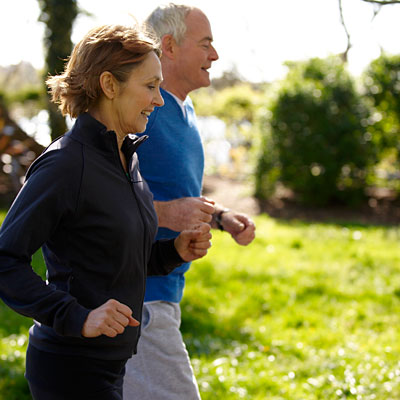Posted on September 29, 2014 by Stone Hearth News
Richmond, VA, Sept. 29, 2014 – Agriculture Secretary Tom Vilsack today announced USDA’s National Institute of Food and Agriculture (NIFA) is making up to $31.5 million in funding available to help participants in the Supplemental Nutrition Assistance Program (SNAP) more easily afford healthy foods like fruits and vegetables. Secretary Vilsack made the announcement with Virginia First Lady Dorothy McAuliffe in Richmond.
“Too many struggling families do not have adequate access to nutritious food,” said Agriculture Secretary Tom Vilsack. “Helping families purchase more fresh produce is clearly good for families’ health, helps contribute to lower health costs for the country, and increases local food sales for family farmers. Public-private partnerships with non-profit organizations and other community groups are already proving to have great success across the country. These resources will allow partnerships like these to help even more families.”
The Food Insecurity Nutrition Incentive (FINI) program, a new Farm Bill program, brings together stakeholders from distinct parts of the food system and fosters understanding of how they might improve the nutrition and health status of SNAP households. Under FINI, applicants may propose relatively small pilot projects, multi-year community-based projects, or larger-scale multi-year projects. Funded projects will test community based strategies that could contribute to our understanding of how best to increase the purchase of fruits and vegetables by SNAP participants through incentives at the point of purchase, supported by effective and efficient benefit redemption technologies, that would inform future efforts.
NIFA will give priority to projects that:
Maximize the share of funds used for direct incentives to participants
Test innovative or promising strategies that would contribute to our understanding of how best to increase the purchase of fruits and vegetables by SNAP participants, which would inform future efforts
Develop innovative or improved benefit redemption systems that could be replicated or scaled
Use direct-to-consumer sales marketing
Demonstrate a track record of designing and implementing successful nutrition incentive programs that connect low-income consumers and agricultural producers
Provide locally- or regionally-produced fruits and vegetables, especially culturally-appropriate fruits and vegetables for the target audience
Are located in underserved communities, particularly Promise ZonesThis is an external link or third-party site outside of the United States Department of Agriculture (USDA) website. and StrikeForce communities.
All FINI projects must (1) have the support of a state SNAP agency; (2) increase the purchase of fruits and vegetables by low-income consumers participating in SNAP by providing incentives at the point of purchase; (3) operate through authorized SNAP retailers, and be in compliance with all relevant SNAP regulations and operating requirements; (4) agree to participate in the FINI comprehensive program evaluation; (5) ensure that the same terms and conditions apply to purchases made by individuals receiving SNAP benefits as apply to purchases made by individuals who are not SNAP participants; and (6) include effective and efficient technologies for benefit redemption systems that may be replicated in other states and communities.
Applications are requested in each of the following three categories: (1) FINI pilot projects (awards not to exceed $100,000 over one year); (2) multi-year, community-based FINI projects (awards not to exceed $500,000 over no more than four years); and (3) multi-year, FINI large-scale projects (awards of $500,000 or more over no more than four years).
FINI is a joint effort between NIFA and USDA’s Food and Nutrition Service, which oversees SNAP and has responsibility for evaluating the impacts of the incentive projects. This solicitation combines funds for fiscal years 2014 and 2015. There will not be a solicitation in fiscal year 2015. Applications are due Dec. 15, 2014. NIFA will host a webinar for applicants on Oct. 2 at 2 p.m., EDT.
Funding for the FINI program is authorized by the 2014 Farm Bill. The Farm Bill builds on historic economic gains in rural America over the past five years, while achieving meaningful reform and billions of dollars in savings for taxpayers. Since enactment, USDA has made significant progress to implement each provision of this critical legislation, including providing disaster relief to farmers and ranchers; strengthening risk management tools; expanding access to rural credit; funding critical research; establishing innovative public-private conservation partnerships; developing new markets for rural-made products; and investing in infrastructure, housing and community facilities to help improve quality of life in rural America. For more information, visit
www.usda.gov/farmbill.
SNAP – the nation’s first line of defense against hunger – helps put food on the table for millions of families experiencing hardship. The program has never been more critical to the fight against hunger. Nearly half of SNAP participants are children, and 42 percent of recipients live in households in which at least one adult is working but still cannot afford to put food on the table. SNAP benefits provided help to millions who lost their jobs during the Great Recession. For many, SNAP benefits provide temporary assistance, with the average new applicant remaining on the program 10 months.
Through federal funding and leadership for research, education and extension programs, NIFA focuses on investing in science and solving critical issues impacting people’s daily lives and the nation’s future.
More information is at
www.nifa.usda.gov.
#
USDA is an equal opportunity provider, employer and lender.
To file a complaint of discrimination, write: USDA, Director, Office of Civil Rights, 1400 Independence Ave., S.W., Washington, D.C. 20250-9410 or call (800) 795-3272 (voice) or (202) 720-6382 (TDD).
Last Date Modified: 09/29/2014
Source - See more at:
http://www.stonehearthnewsletters.com/us-govt-spend-31-million-empower-people-make-healthy-eating-choices/nutrition/#sthash.HflkPXmQ.dpuf





